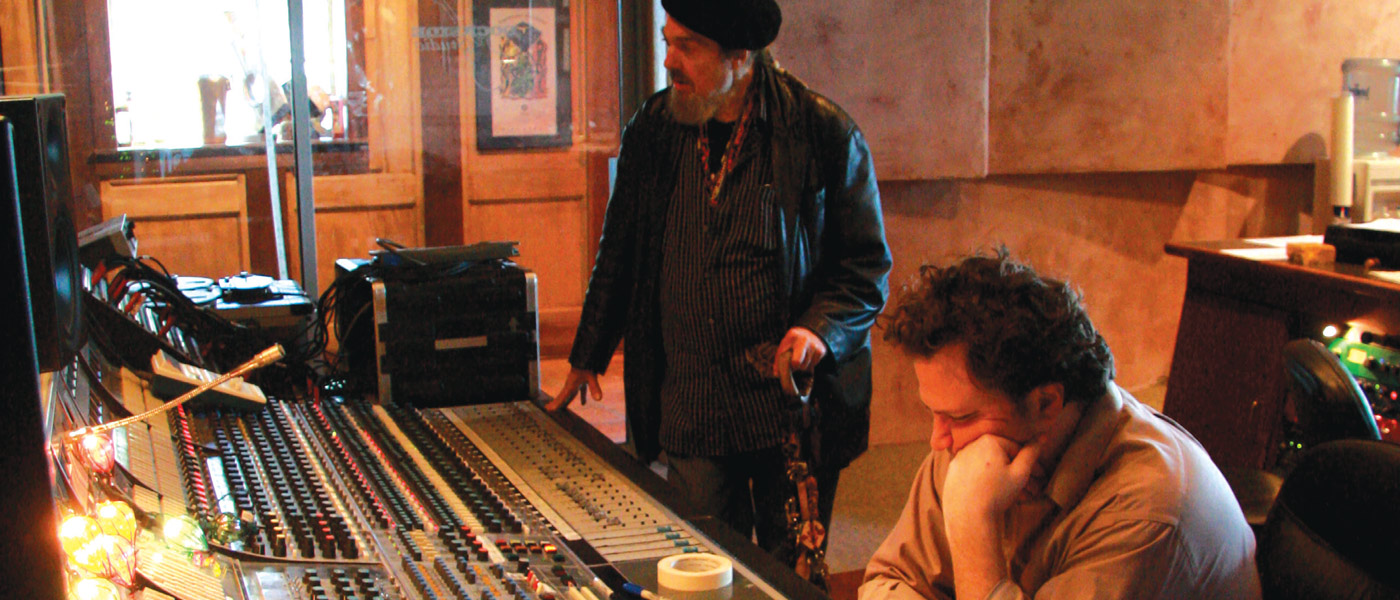The flooding that struck South Louisiana in August 2016 was a test for many residents. Homes and businesses were lost to the three-day deluge as slow-moving rainstorms hovered over the region, forcing bayous, rivers and lakes to rise above their banks and sweep over the land.
Dockside Studio, situated on 12 acres of land on the Vermilion Bayou in Maurice, La., was no exception. “We got flooded,” said Cezanne “Wish” Nails, co-owner of the studio with her husband, Steve Nails. “It was terrible.”
The reaction to the inundation at the studio was swift. The word went out over social media that the facility had taken in several feet of water and the local music community responded. “Masses of people came,” she said. “One person would volunteer to cook. Two women from New Orleans came in and wiped down all the cables. Others did carpentry to replace damaged flooring. Dave Nezat (former Chubby Carrier drummer) put out this APB on Facebook. Masses of people came and helped move equipment out of harm’s way. For a month or two, it was like its own little community out here. It looked like a hippie commune.”
Over several weeks, the world-class studio rose again from the muddy waters of the Vermilion. “It was a well-oiled machine,” Wish said of the recovery effort. “It was the most amazing thing I have seen.” But Dockside and its owners are no strangers to adversity. The studio was forged out of a tragic automobile crash in 1984 that left Steve, an accomplished guitarist who graced stages in the 1970s and early 80s with a slew of regional bands. After the crash, as a quadriplegic, wheelchair bound, he was unable to play.
It didn’t slow him down. His electric chair sped along the blacktop path from the main residence to the studio, popping a wheelie as it climbed up the path to the studio’s porch. The secret, he said, is his connection to the energy and life that the tract along the bayou has brought to him. “Once I go through the gates, all my superpowers disappear,” he said. “It’s very depressing for me to leave the property. All the veins of the property are just glued and sucked into me. And once I get in the van and leave the property for an appointment, all of my superpowers are gone. It’s very demoralizing. I don’t realize I am in a wheelchair until I get to the gate.”
The settlement from the crash fueled the purchase of the Dockside property in 1990 and the creation of the studio. Since, it has become a cornerstone of the vibrant music culture in Southwest Louisiana.
From the street, a tan sheet-metal wall isolates the grounds from passing traffic. The driveway leads to the pastoral grounds, enveloping visitors under the canopy of hundred-year-old oaks, heading toward the cafe-au-lait waters of Bayou Vermilion. The concept behind Dockside was to create an immersive environment for artists. The secluded grounds have everything needed for a band to move in and do some serious woodshedding — knocking out song ideas, tracking parts, mixing, remixing, and experimenting with state-of-the-art equipment, and more importantly, a warehouse of vintage amplifiers, instruments and microphones that sets the studio apart from any other studio in the region.
And the “move in, make records” philosophy (guest rooms above the studio as well as a pool house with its own studio for songwriting and rehearsal) has attracted artists from around the world. Mark Knopfler recorded there. So has B.B. King who left behind an autographed black Gibson ES-335 the famed “Lucille” model, which hangs in the main live room where musicians record.
In the early days, between tours, slide guitar king Sonny Landreth lived in the mobile home that served as the original pool house on the property. Over the years, Dockside sessions have included everything from stellar performances in the studio to New Orleans songwriter/guitarist/producer Anders Osborne forming pick-up games on the basketball court and blues guitarist Samantha Fish and her band taking stress breaks at the pool. “We just had the Cowsills here for six weeks,” Steve Nails said. “Susan Cowsill, Paul Cowsill, Bob Cowsill were here, recording with producer Trina Shoemaker (Queens of the Stone Age, Sheryl Crow, Emmylou Harris).”
Even after 30 years, Steve still approaches the music, and the people who create it, with a true musician’s innocence and appreciation. An ardent Bruce Springsteen fan, he tagged Shoemaker’s work with Patti Scialfa, Springsteen’s wife, as a highlight for him.
“I had my little spot. I didn’t say one word through the entire session. I sat right there, Susan walking in circles, Paul is talking to me about life, and Bob’s sitting at the board, in charge, he said. “Such a rush of adrenaline.” It was just as memorable for Wish. “They did like 84 tracks of vocals to do one song,” she added. “Susan’s so funny. She’s been doing it since she was a kid, so she is very nonchalant, very natural.”
Steve also keeps learning, even after decades in the barn-turned studio. After watching Shoemaker work, he came away with a new, or at least deeper, understanding of the recording process. “If you could stay here for 48 hours and see what we can do to vocals, to acoustic guitar, it would make your jaw drop,” he said of Shoemaker’s work.
Another essential part of Dockside’s drawing power is Steve’s self-professed gear fetish. Although much more of the recording and post-production side of the work is now done digitally, having pristine analog equipment available during the recording process is a rarity that gives Dockside recordings a warm feel that can’t be captured on most modern gear. He has spent decades scavenging old studios for vintage equipment, everything from Neumann and Rupert Neve microphones to analog outboard effects, and even the mattress-sized spring reverbs he bought from FAME Studios in Muscle, Shoals, Al., — where some of the greats have recorded: Aretha Franklin, Otis Redding, Bobby Gentry, Gregg Allman, Aerosmith’s Steven Tyler and many more. “They’re still upstairs,” Wish said of the reverb units. “We don’t roll as much tape as we used to, but we still have the Studer tape machine (reel-to-reel multi-track recorder). We had two of them, and we kept the one that was the least damaged in the flood.”
In the early days, the Nails were fortunate to have engineer Bill Halverson (Cream, Crosby Stills Nash and Young, Eric Clapton) as a client when he was recording Cajun-rock band Mamou for Rounder Records. That relationship helped to define the studio’s mission and set up the control room’s centerpiece — a 52-track Neve recording console. “This is all Bill Halverson. He was my first client,” Steve said. “I didn’t know what I was doing,” he said. “You could speak and remove all doubt or sit back and be silent. I was silent the whole session and picked his brain. Bill Halverson is my guru.”
In addition to national and international notoriety the studio has gained, it has supported the efforts of a myriad of local artists. Several Neville Brothers have recorded there, as well as funk bass master George Porter Jr., and New Orleans soul queen Irma Thomas. Allen Toussaint has graced the studio as well as Stanley “Buckwheat” Dural, swamp pop legend Bobby Charles, Marc Broussard, Sammy Kershaw, Sonny Landreth, Terrence Simien, and Wayne Toups, among hundreds of others. The list of artists who have, at least for a short time, called Dockside home is as long as it is illustrious.
And as long as Steve is on the grounds and has his superpowers intact, he is as happy as he can be with where life has taken him. “When I am on the property, I’m just a studio rat,” he said. “All I do for a living is I’m a studio rat. I love being a studio rat.”

